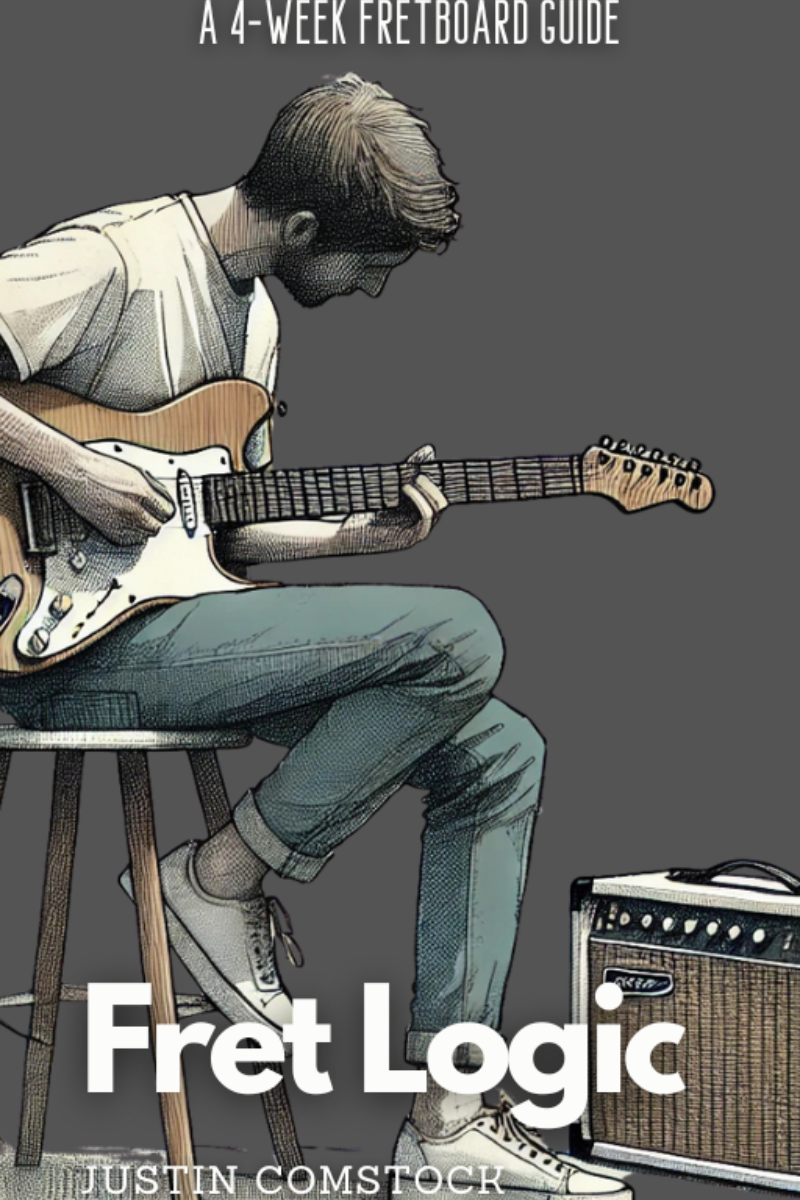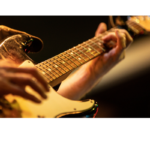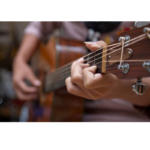Forget Complexity. These Are the Power Chords On Guitar That Built Rock.
Most guitarists think they need jazz voicings, weird inversions, or a master’s degree in harmony to sound impressive.
Wrong. Power chords on guitar are proof that two notes, played with clarity and conviction, can do more than ten stacked extensions ever will.
They’ve carried punk bands through entire albums. They’ve powered the riffs of Sabbath, Nirvana, and Foo Fighters. They’ve filled arenas. They’ve started revolutions.
And today, you’re going to learn how to make them your signature sound.
🚨 Stop Guessing. Start Riffing.
Let’s be real: If you’re still stumbling around the fretboard, hoping to find the right note, you’re not playing confidently—you’re surviving.
FretDeck™ is the visual system built for guitarists who want to master the fretboard fast, write better riffs, and play with clarity.
🛒 Click here to back FretDeck on Kickstarter →

❌ Stop Guessing. Start Shredding.
If you’re still fumbling through scale patterns and box shapes… it’s costing you progress.
FretDeck™ is the no-fluff system that shows you exactly how to master the fretboard—fast. Early access.
⚡️ This isn’t for dabblers. It’s for players who want results.
👉 Click here to join the pre-launch now
Early access. Limited rewards. Don’t wait.
What Is a Power Chord, Anyway?
A power chord is music’s version of black coffee: no sugar, no fluff—just pure focus.
At its core, it’s this:
- Root note
- Perfect fifth
- (Optional) an octave above the root
No third means it’s neither major nor minor. That makes it bold, neutral, and ideal for distortion.
It’s typically written as A5, D5, E5. The “5” just tells you it’s root + fifth.
Simple? Yes. But this simplicity makes it unstoppable in the hands of the right player.
How to Build Power Chords On Guitar (And Use It Anywhere)
- Place your index finger on a root note — say, 3rd fret of the low E string (G).
- Place your ring finger two frets up and one string down (5th fret of the A string) — that’s the fifth.
- Add your pinky on the 5th fret of the D string to grab the octave.
🎸 That’s it. You’ve built a G5 power chord.
Now move it anywhere on the neck. Same shape, different key. That’s the magic of power chords on guitar — they’re completely moveable.
Why Beginners and Pros Use Power Chords
They’re not “easy.” They’re efficient.
Power chords:
- Sound huge with gain
- Sit perfectly in a mix
- Let you focus on rhythm and timing
- Reduce theory stress and decision fatigue
- Are essential to rock, punk, metal, and blues
If you’ve ever listened to a song and thought, “Why does that riff hit so hard?”—there’s a good chance it’s built on power chords.
4 Creative Ways to Make Power Chords Sing
1. The Chromatic Slide Drill
Start at A5 on the 5th fret of the E string. Slide up one fret at a time to the 12th. Then come back down.
Use a metronome. Try palm muting. Try delay.
🎧 This drill teaches control, groove, and tension-release — the core of every great riff.
2. Circle of Fifths Riff Engine
Start with a power chord. Follow the circle:
E5 → B5 → F#5 → C#5 → G#5 → D#5 → A#5 → F5
It’s more than theory — it’s a riff-building roadmap. You’ll feel natural resolution in your hands and your ears.
🃏 Want it randomized? Use the FretDeck Power Chord Cards to draw your next root.
3. Groove = Power
Power chords are all about how you hit them.
Try:
- Eighth-note punk pulses
- Metal gallops (down-up-down)
- Syncopated stabs à la Rage Against the Machine
- Palm-muted chugs for that metalcore feel
It’s not the chord—it’s the attack.
4. Let Silence Do the Talking
Think of AC/DC. The space between the chords is just as important.
Back in Black wouldn’t hit half as hard if the band filled every second with sound.
Leave room. Let the beat breathe. That’s what makes a riff memorable.
🎵 Songs That Use Power Chords as Hooks
- “Smells Like Teen Spirit” – Nirvana
- “American Idiot” – Green Day
- “Iron Man” – Black Sabbath
- “My Hero” – Foo Fighters
These aren’t just songs. They’re proof that power chords can carry a melody.
Use them intentionally. Make them sing. Make them speak.
Ready to Level Up? Try These Advanced Moves
- Octave Layering: Add the high octave (two strings down, same fret) for a thicker sound.
- Inversions: Start with the fifth instead of the root — great for breakdowns or creating tension.
- Sliding Double Stops: Move just the root and fifth up the neck. It’s slick, bluesy, and killer live.
- Pedal Tones: Drone on an open string (like low E) while changing power chords above.
Each trick adds depth to your riffs without adding complexity.
✏️ Write Songs With Power Chords Like a Pro
Use these writing prompts to start crafting original riffs:
- Write a full section using only two chords
- Climb chromatically (G5 → G#5 → A5) for tension
- Start with palm-mutes, explode into open strums for the chorus
- “Fake” a key change by moving one fret up (A5 → Bb5)
The secret? You can transpose everything instantly by sliding the shape. That’s real creative freedom.
💥 This Is Where FretDeck Changes the Game
Still playing box patterns with no clue where your root is?
Still stuck using the same old chords?
You don’t need more info. You need clarity.
The FretDeck: Pentatonic Guitar Scales system gives you:
- 60+ pentatonic scales
- Root notes across E & A strings
- Visual diagrams to build power chords instantly
- Riff prompts using the Circle of 4ths
- Weekly missions to lock in muscle memory
🎯 No theory headaches. No fluff. Just real results.
🚀 Get your deck before we sell out →

❌ Stop Guessing. Start Shredding.
If you’re still fumbling through scale patterns and box shapes… it’s costing you progress.
FretDeck™ is the no-fluff system that shows you exactly how to master the fretboard—fast. Early access.
⚡️ This isn’t for dabblers. It’s for players who want results.
👉 Click here to join the pre-launch now
Early access. Limited rewards. Don’t wait.
💬 Join the Guitar Freaks Hangout (and Get a Free Book)
We’ve built a free Discord community for players like you.
Inside, you’ll find:
- Weekly riff prompts
- Fretboard challenges
- Classic solo watch parties
- Guitar memes & gear talk
- Free download of my eBook, Fret Logic
👉 Join the Guitar Freaks Hangout Discord now →

Join Guitar Freaks Hangout on Discord! 🎸
Get Fret Logic FREE!
Join the Guitar Freaks Hangout Discord and get exclusive access to my entire e-book, Fret Logic! Master the fretboard and elevate your solos with this comprehensive guide.
👉 Don’t miss out—join now and download your free copy!
✅ Your 7-Day Power Chords On Guitar Game Plan
| Day | Challenge |
|---|---|
| 1 | Slide A5 chromatically to the 12th fret |
| 2 | Build riffs using Circle of Fifths |
| 3 | Experiment with palm-muted groove |
| 4 | Write a 2-chord progression and loop it |
| 5 | Transpose a favorite riff |
| 6 | Add dynamics — explode your chorus |
| 7 | Share your riff in the Discord and get feedback |
🎤 Final Word: Power Chords on Guitar Are Still King
Forget what you heard about “real chords” needing four fingers.
Two notes, when played with intent, can move a room.
You don’t need to complicate your playing to make it powerful.
You just need to play like you mean it—and learn where those chords live.
The FretDeck Kickstarter is your roadmap.
The Guitar Freaks Discord is your community.
Now go plug in.
And make those two notes sound like the whole world is listening.










